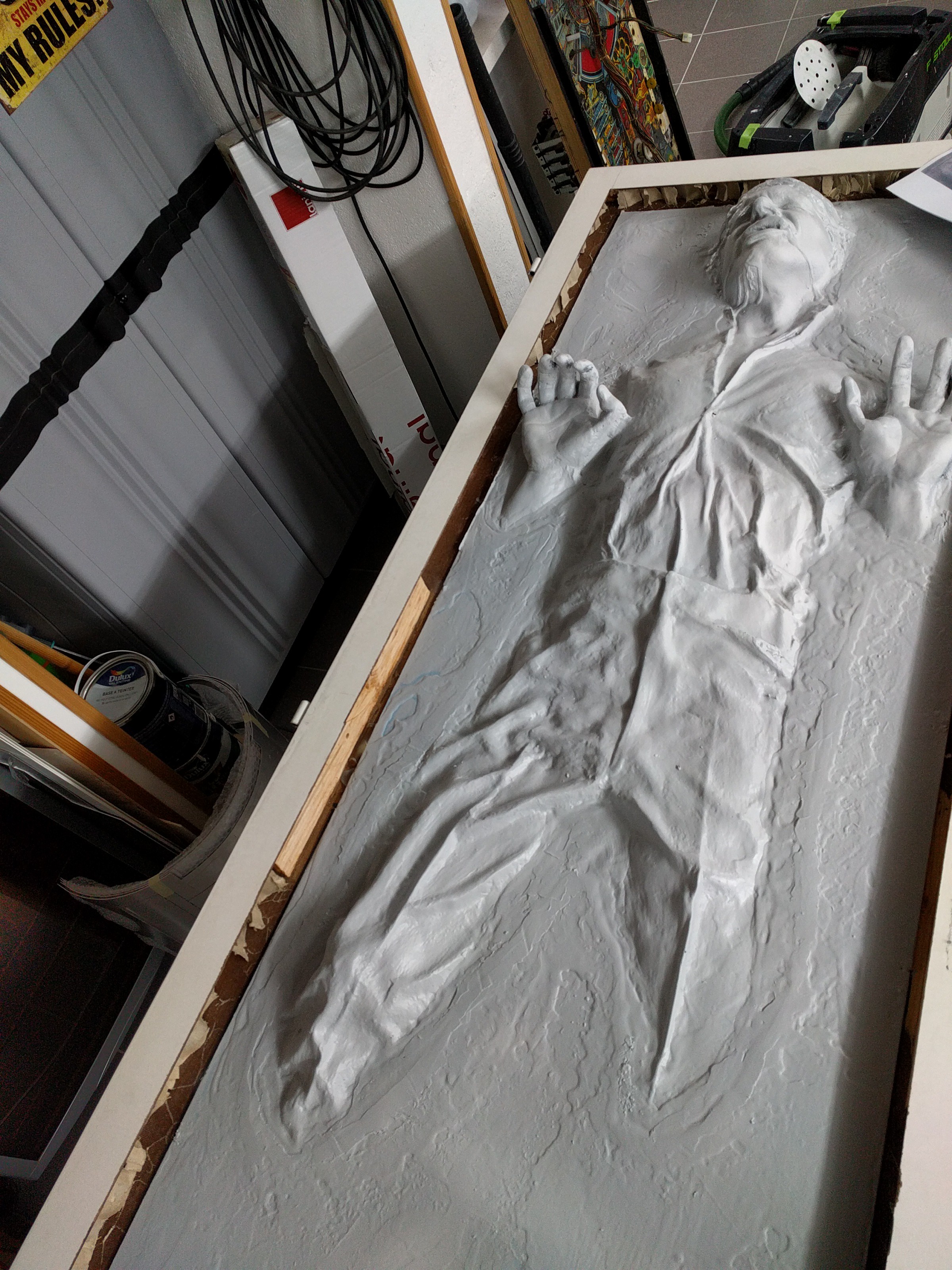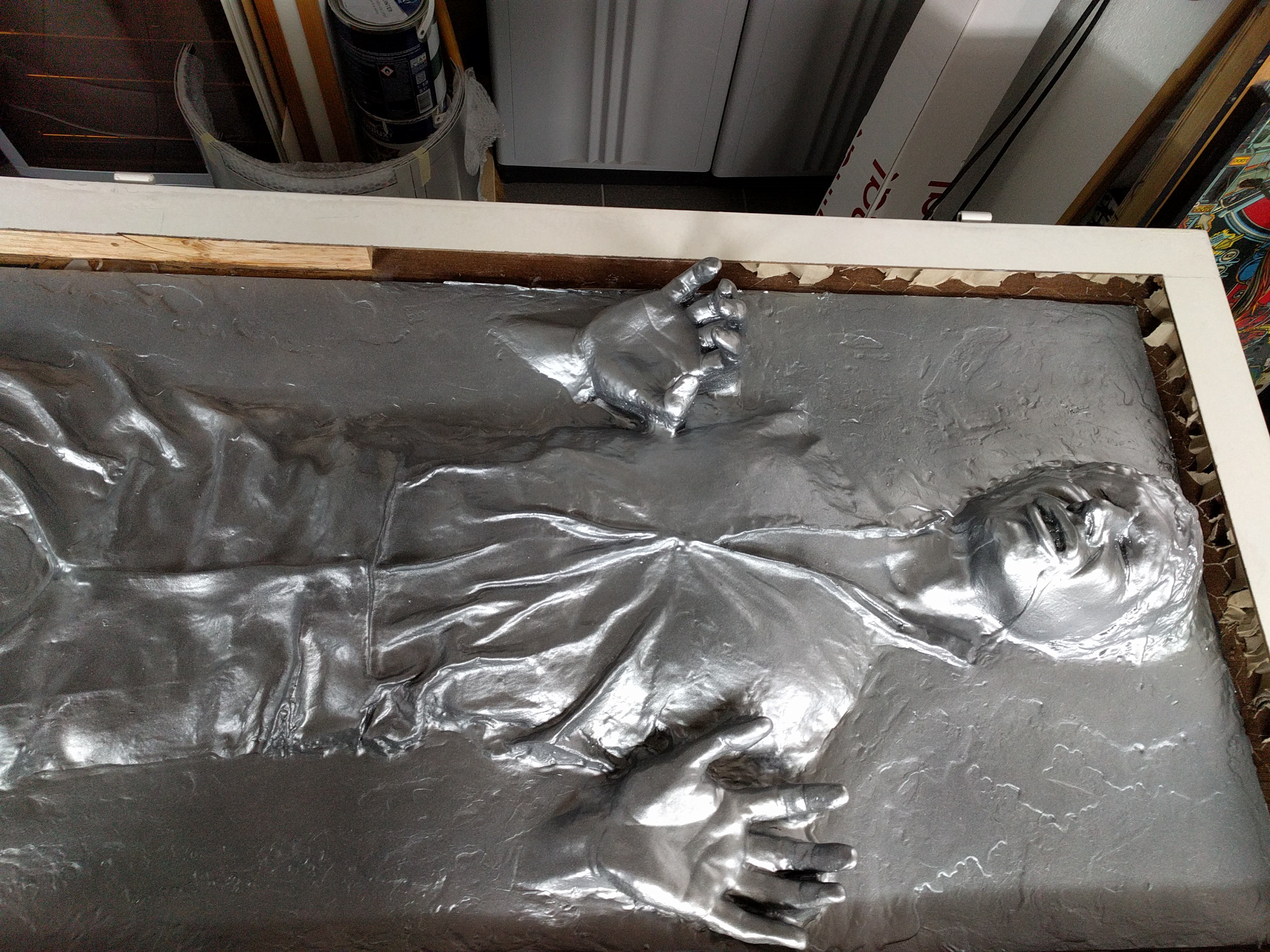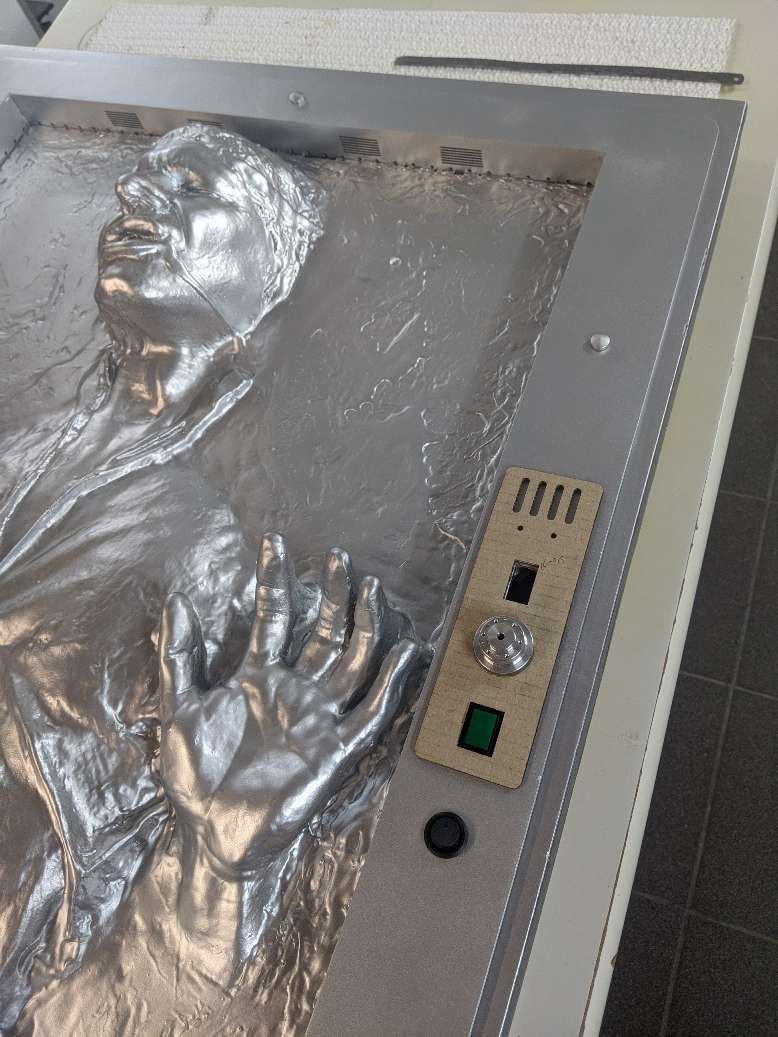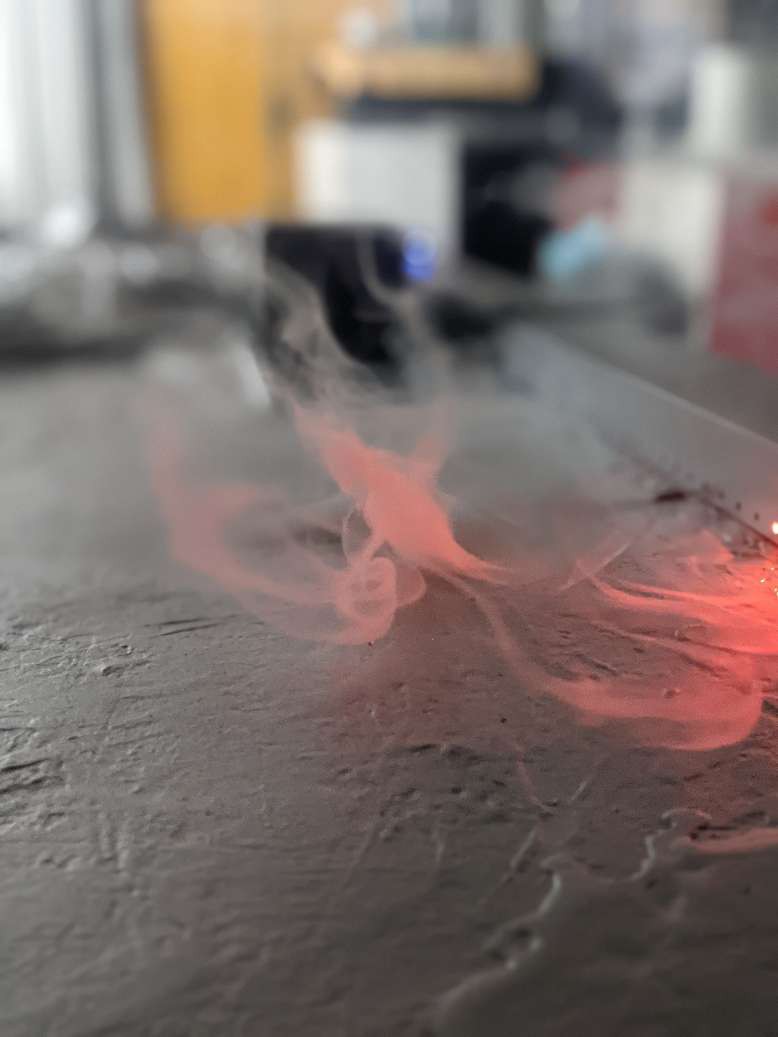The build started with cutting the door and removing the inside honeycomb structure. The other side was reinforced with an additional 5mm plywood board, glued and nailed. The PU rubber cast of the HIC was filled up with PU expanding foam, glued and nailed, then carbonite was sculpted with wood glue and drywall mud splatter.
After several weeks of drying and multiple layers of "carbonite" I primed it with 2 coats of 2-part primer with the spraygun and added the silver tone, ended with black misting to bring a darker, gunmetal styled carbonite, slightly aged.


The sides took me time to complete, and I had to wait until I finally got my Muse laser cutter (during the first lockdown). In order to preserve the removable aspect of the outer framing, I perfected the seam between the frame the HIC body with more wood glue, then repainted everything. It leaves the pixels holes just enough of clearance to side illuminate it. The health panel was then pre-cut in cardboard to test parts fitting. The aluminum cylinder greeblie comes from an old HDD and hides the USB access to the board (using a panel-mount adapter underneath) allowing for mass storage access and bootloader to finalize the programming in-situ. Side frame is attached to the door structure with mirror attachments screw-on caps (brass, painted).
The project went thru several iterations during late 2021 and early 2022. Initially, the triggering on the unfreezing sequence (freeing Han Solo from the carbonite) was supposed to use a fingerprint scanner that I saved for this purpose several years ago and for which I coded the driver. It was based on a ST capacitive sensor which resolution was alsmost fitting the OLED display and the board allowed to download B&W or grayscale pictures of the sensed fingerprint, hence making a cool sci-fi "finger print scan in progress" type of look. Unfortunately, the sensor died on me during the install stage, and was replaced by a simple green momentary switch... Sith Happens ! ^^

The smoke generator is made out of a mini air pump and a vape inhaler plus glycerin oil (from any para-pharmacy). The MCU board includes 4 n-channel MOS- FETs, PWM driven, for this purpose.
The ledstrip is driven by dma powered code that automates the transmission of the datastream with nearly no CPU use, aside the buffer population and DMA kickstart, which leaves plenty of processing time for the beefy SAMD51 (@150MHz) to drive the strip fx and OLED, plus sound, sent to the speaker's above Harrison's head.
While the smoke generator is really shy and will definitely bring some fart jokes, it was a nice to experiment with it :-D

Youtube early demo from november 2021, before finishing the code and final OLED animations:
 erv.plecter
erv.plecter